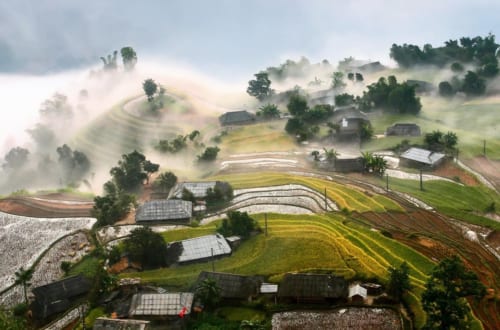Handicraft Ninh Binh
Table of contents
Handicraft in Ninh Binh and its traditional villages
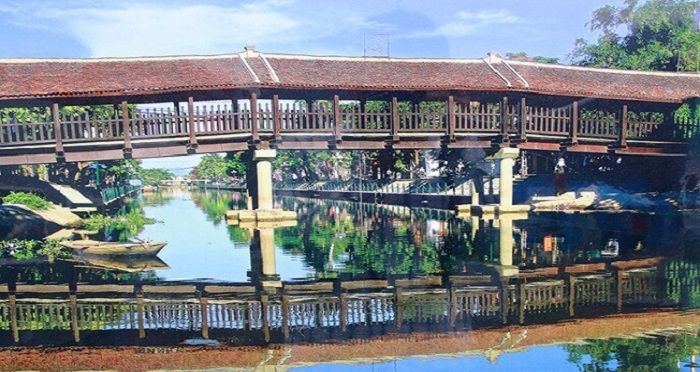
The postcard landscapes of Ninh Binh have this something hypnotic, fascinating. That would make you forget the cultural and folkloric richness condensed in the handicraft villages of Ninh Binh.
Of course, they are not as numerous as around the capital, which would perhaps explain their relative discretion in the catalogs of the usual tourist circuits. But it turns out that Song Voyage particularly likes truant paths… You too? So follow us to discover the craft villages in the splendid province of Ninh Binh !
Before leaving…
Located less than 3 hours by bus from Hanoi, the capital of Vietnam, this region, which is often called Halong Bay on land, is an astonishing, fascinating destination. With landscapes very similar to those of Halong Bay . Except that here, the limestone cliffs and karstic peaks emerge from the rice fields and not from the waters of the Gulf of Tonkin. Its capital is Ninh Binh , a city that does not have much going for it. Except to serve as a starting point for very beautiful getaways off the beaten track.
How to get to Ninh Binh ?
You can opt for a shared bus that will pick you up from your hotel and drop you off in Ninh Binh . Or you can opt to go to Giap Bat bus station and from there. Then board a bus that is supposed to drop you off 2 hours later somewhere in the provincial capital.
You can reach the handicraft villages of Ninh Binh hiring a private car. You can also go there by motorbike .
When to go to Ninh Binh ?
According to your availability and your constraints, adapt your circuit bearing in mind these few indications:
In summer – from May to September – it is hot, humid and rainy. Unlike the winter period (from November to February) during which it is cold and dry. Spring and autumn – understand the months of March, April and October, the climate is milder. Note that the months of March and April see many cultural and folk festivals taking place. Don’t hesitate to ask us for advice.
Handicraft villages in the Ninh Binh region
Sedge work in Kim Son village
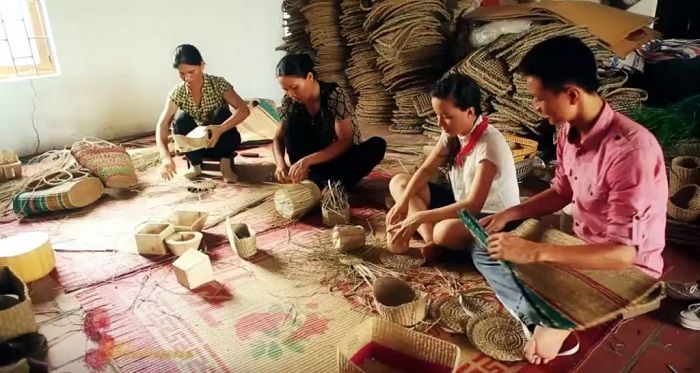
Sedge – unless you know it as sedge – is a perennial that forms clumps of sturdy, sometimes sharp, linear leaves. This plant has been cultivated around Kim Son village for more than two centuries. Local artisans have made a specialty of producing all kinds of sedge products.
It’s a certain Nguyen Cong Tru (1778-1858) – a businessman by profession – who initiated and developed this particular culture. With the slogan “the sedge encroaches on the sea”. He had seen all the potential of this wasteland coastal region. At the time resembling an immense mudflat, and endeavored to also develop agriculture and maritime activity there. Those who work with sedge are both shrewd farmer-cultivators (this plant has the same growth cycle as rice) and skilled craftsmen. Here the sedge is soft and shiny. Who said like a caress? It creates a kind of link between men and nature, as a symbol of men who win over the sea.
The weaving of the sedge involves the cultivation of the plant. Then Its transformation into flexible and dry stems which will then be carefully tinted. Only then comes the weaving phase, each craftsman having his hand, his know-how, his particular experience. From their skillful and creative hands come mats, rugs, but also hats, bags, and other tourist trinkets.
The Kim Son district is best known for its cathedral in Phat Diem. Now you know where to push your curiosity a little further…
Embroidery in the spotlight in the village of Van Lam
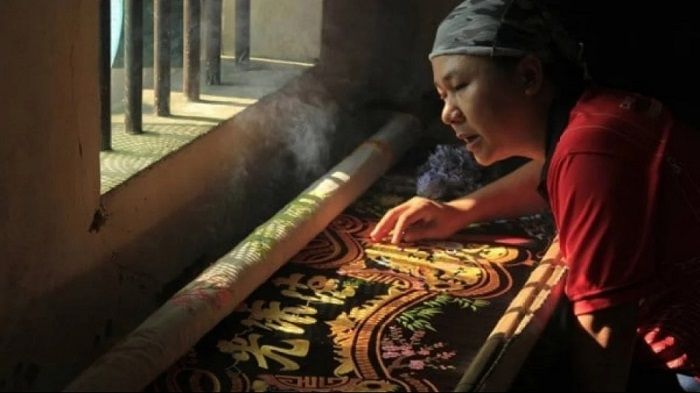
Founded in the 13th century under the Tran dynasty and under the name of O Lam (Forest of the Crows), Van Lam is reputed today to be the kingdom of embroidery in the Red River delta. At the village gate, you will see an old temple dedicated to the memory of those who taught and transmitted the art of embroidery here. And not to offend anyone, they also venerate those who introduced lace to the village, more recently, in the 20th century.
Here, everyone embroiders, women as well as men! You will find many of their products sometimes sold with insistence on the quays of Tam Coc. But a visit to the village will allow you to take the measure of the skill of the craftsmen. Some of their embroidery is noticeably close to painting…
Van Lam being located in the commune of Ninh Hai (not far from Tam Coc), you now know how to follow a circuit in Tam Coc- Bich Dong…
The carpenters of Phuc Loc
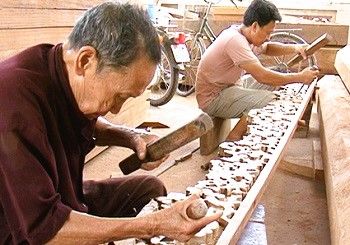
You will find Phuc Loc about 2 km from Ninh Binh . It dates from the Dinh period (in the years 968 to 980) and had its heyday under the L ê (15th century). Today, thanks to its carpenters, it is one of the 50 most typical traditional craft villages in Vietnam.
From ancient times, the craftsmen of Phuc Loc produced works with sophisticated lines, intended primarily for pagodas, temples and communal houses. First distributed to the surrounding area, the pieces subsequently spread to the provinces of Thanh Hoa and Nghe An. This is how the popularity of the carpenters of Phuc Loc has spread. From the 1990s, production responded to modern demands with a whole range of new products, such as tables, chairs, cupboards and other doors. The work has become somewhat mechanized while respecting the gestures and know-how of yesteryear. Some craftsmen have also specialized in the renovation of old housing.
Faced with modernism, the craftsmen of Phuc Loc not only knew how to adapt but above all, knew how to keep the memory of a trade.
Bo Bat village pottery
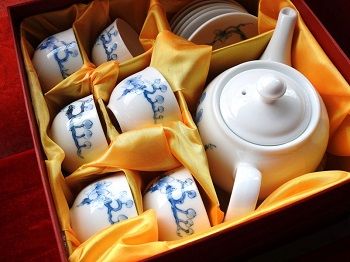
The ancient village of Bo Bat (today it tends to be called Bach Lien) is considered the cradle of ceramics in Vietnam. Let’s say, rather, one of the cradles.
Belonging to the district of Yen Mo, it is placed on a land renowned for its very rare white clay, called Bo Di and nicknamed “young land of dew”. This type of earth has the particularity of requiring only between 50% and 70% of cooking time compared to another clay. While giving a soft and resistant ceramic at the same time. These properties were known from the reign of the Dinh, hence the idea that Bo Bat is the cradle of Vietnamese ceramics.
There is a story (a legend, a historical fact? If you have the answer, tick the right box and write to us. That when Ly Thai To moved the capital to Thang Long Citadel, he brought with him five great families of Bo Bat to embellish the new capital and produce ceramics in the service of the court (and incidentally of the people). These craftsmen settled on the lands along the Red River, founding the craft village of Bat Trang in the process . Bo Bat, having lost its vital forces, slowly fell into disuse until tourism and the renewed interest in craft villages brought it out of its torpor. This is how the current Bo Bat pottery workshop was born. It essentially produces teapots, dishes or even flowerpots with distinctive patterns and textures, different from other ceramic products.
More information about Ninh Binh here



